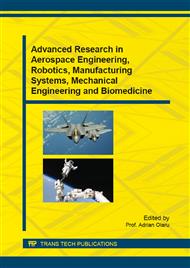[1]
F. Vuilleumier, A. Weatherill, B. Crausaz. Safety aspects of railway and road tunnel: example of the Lotschberg railway tunnel and Mont-Blanc road tunnel. Tunnelling and Underground Space Technology 17 (2002) 153–158.
DOI: 10.1016/s0886-7798(02)00018-4
Google Scholar
[2]
F.W. Guldenmund. The nature of safety culture: a review of theory and research. Safety Science 34 (2000), 215–257.
DOI: 10.1016/s0925-7535(00)00014-x
Google Scholar
[3]
D. Elms. Rail safety. Reliability Engineering and System Safety 74 (3), 291–297, (2001).
DOI: 10.1016/s0951-8320(01)00085-0
Google Scholar
[4]
M.D., Cooper. Towards a model of safety culture. Safety Science 36 (2000), 111–136.
Google Scholar
[5]
J.R. Phimister, V.M. Bier, H. C Kunreuther, (Eds. ). Accident Precursor Analysis and Management: Reducing Technological Risk through Diligence. The National Academies Press, (2004).
DOI: 10.17226/11061
Google Scholar
[6]
S.K. Chen, T.K. Ho, B.H. Mao. Reliability evaluations of railway power supplies by fault-tree analysis, IET Electr. Power Appl., vol. 1(2), pp.161-172, (2007).
DOI: 10.1049/iet-epa:20060244
Google Scholar
[7]
F. De Felice, A. Petrillo. Methodological approach to reduce train accidents through a probabilistic assessment. International Journal of Engineering and Technology (IJET). Vol. 4 No 6 Dec 2012-Jan 2013. pp.500-509. ISSN : 0975-4024.
Google Scholar
[8]
R.P. Cogdill, C.A. Anderson J.K. Drennen. Risk analysis for near infrared method development, NIR News 15 (2004) 12–13.
DOI: 10.1255/nirn.787
Google Scholar
[9]
R. Hirsch, 2006. Reducing risk by probabilistic assessment, defence in depth and precursor monitoring. In: China International Railway and Metro Safety Conference. Imperial College, CoMET.
Google Scholar
[10]
N. Leveson. A new accident model for engineering safer systems. Safety Science 42 (2004), 90–99.
Google Scholar
[11]
M. -L. Lin, et al., 2002. Research project #6: develop better data on accident precursors or leading indicators, Buraeau of Transportation Statistics. <http: / www. bts. gov/publications/safety_in_numbers_conference_2002/>.
Google Scholar
[12]
J.S. Krouwer. An improved failure mode effect analysis for hospitals, Arch. Pathol. Lab. Med. 128 (2004) 663–667.
Google Scholar
[13]
C.J. Price, D.R. Pragh, M.S. Wilson, N. Snooke. The flame system: automating electrical failure mode and effects analysis (FMEA). Proc Reliab Maintain Symp 1995; 90–5.
DOI: 10.1109/rams.1995.513228
Google Scholar
[14]
F. De Felice, A. Petrillo, M.G. Gnoni. Risks analysis for assessing safety in railway tunnel Safety, Reliability and Risk Analysis: Beyond the Horizon - Proceedings of the European Safety and Reliability Conference, ESREL 2013, 2014, Pages 2281-2287.
DOI: 10.1201/b15938-341
Google Scholar
[15]
J.N. Sorensen. Safety culture: a survey of the state-of-the-art. Reliability Engineering and System Safety 76 (2002), 189–204.
DOI: 10.1016/s0951-8320(02)00005-4
Google Scholar


